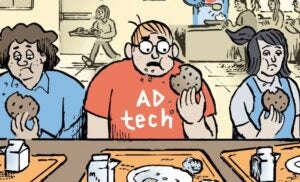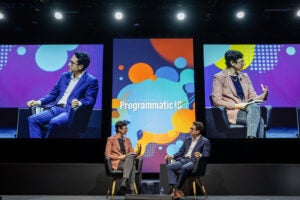 Even as marketers increasingly see native programmatic as a part of the core digital arsenal – alongside video, display and mobile – industry leaders like Sharethrough have encountered a lag in adoption from major DSPs.
Even as marketers increasingly see native programmatic as a part of the core digital arsenal – alongside video, display and mobile – industry leaders like Sharethrough have encountered a lag in adoption from major DSPs.
Part of the problem is that the existence of technology solutions hasn’t had a chance to sink in with brands and marketers. Dan Greenberg, founder and CEO of Sharethrough and co-chair of the IAB Native Advertising Task Force, stressed this percolation as a contributor to the slow pace of change. “[Native programmatic standards] went from five months ago being an idea in a Google group hangout to just three months ago being ratified by the IAB,” he said.
Major players on the demand side have been frank about the potential of native programmatic and the slower-than-expected adoption of standards like OpenRTB2.3, which were developed to facilitate the transition. Aaron Kechley, SVP of products at DataXu, echoed many of his demand-side peers in rebutting the idea that progress from OpenRTB2.3 means there’s a technology solution in place.
“The specification essentially calls for creative assets to be defined as ‘primitives’ that are assembled by the publisher at run-time into a full ad unit that is responsive to the user experience,” he said. “In the grand scheme of software development, we’re not talking about a huge amount of work, but there is more to this upgrade than a garden-variety exchange connection.”
Kechley also highlighted the frustration of many on the native side with what he calls “a chicken and egg situation,” pointing out that DSPs are waiting on scalability while suppliers need demand in order to demonstrate ROI and build out.
Tim Sims, GM of inventory partnerships at The Trade Desk, is also trying to thread the needle on standardization and scale. “As DSPs we have to evaluate native as an opportunity in the context of ‘How can this scale?’ he said. “RTB 2.3 is a small step forward on a long road for native to become a format that can be achieved at scale.”
AppNexus sees a need for industry-scale progress beyond the OpenRTB2.3 technical standards. “We need a shared understanding of what the different types of native ads even are,” said Ryan Christensen, SVP and GM at AppNexus. Christensen believes it would be easier to wade in if the water wasn’t so murky, pointing to in-feed social media ads, high-impact branded content, and content recommendation platforms like Taboola and Outbrain, all of which form a muddled pool of supply. “An end-user from a UX perspective might not distinguish [between] them, but we need to as marketers and publishers because they satisfy completely different needs,” Christensen said.
The appeal of native advertising’s customization is also a major drawback, as Janae McDonough, senior director of Twitter’s MoPub, explained in an email response: “For publishers, integrating native ads takes more time than standard ads because the ad becomes part of the experience.” The need to balance publishers’ control of the ads with a scalable standard is “a tricky thing to do,” according to McDonough. As of now, social media behemoths like Facebook and Twitter dominate the native market, but smaller platforms are looking to synch up and build the scale that’s difficult to replicate outside of The Great Walled Gardens.
Greenberg sees a two-pronged approach, with “a whole market emerging around closed platforms building native ad tech for the rest of the web,” alluding to both MoPub and Facebook’s Audience Network, with open advertising platforms turning from slow, early adopters into fast followers.
Business Insider corroborates Greenberg’s suspicions. In a recent report on native advertising, BI predicts social media will continue to host the majority of native ads, but that native-style display will grow at a faster rate in that time.
McDonough suggested that the issue could be a lack of cohesion between DSPs and advertisers, as opposed to between the supply and demand sides. “DSPs are still working to figure out how to use this new format and collect the right assets from advertisers,” she said. Greenberg views that as a good thing, as it’s indicative of a communications issue, and not a potentially more damaging technical disconnect. “Some of the biggest native advertisers are now actively pushing their DSP partners to integrate,” Greenberg said.
Christensen acknowledged that DSPs aren’t leading the charge, but believes they’re going to be the backbone for any programmatic native expansion. “Places that people think of when they think of native, like TripleLift for example, build their network on a platform like AppNexus,” he said. “So even though you might not see AppNexus on that Lumascape, we’re all over it.”










